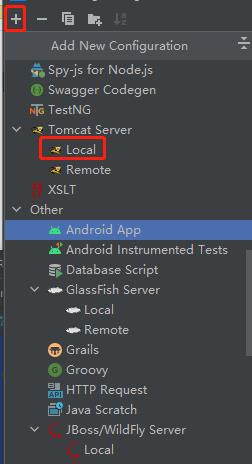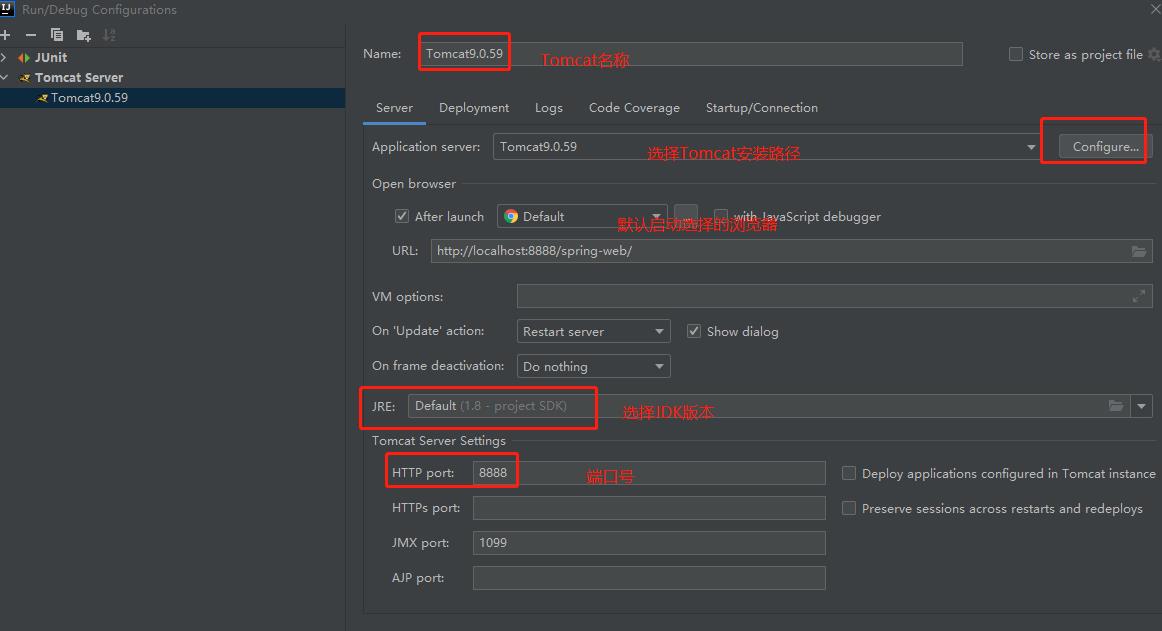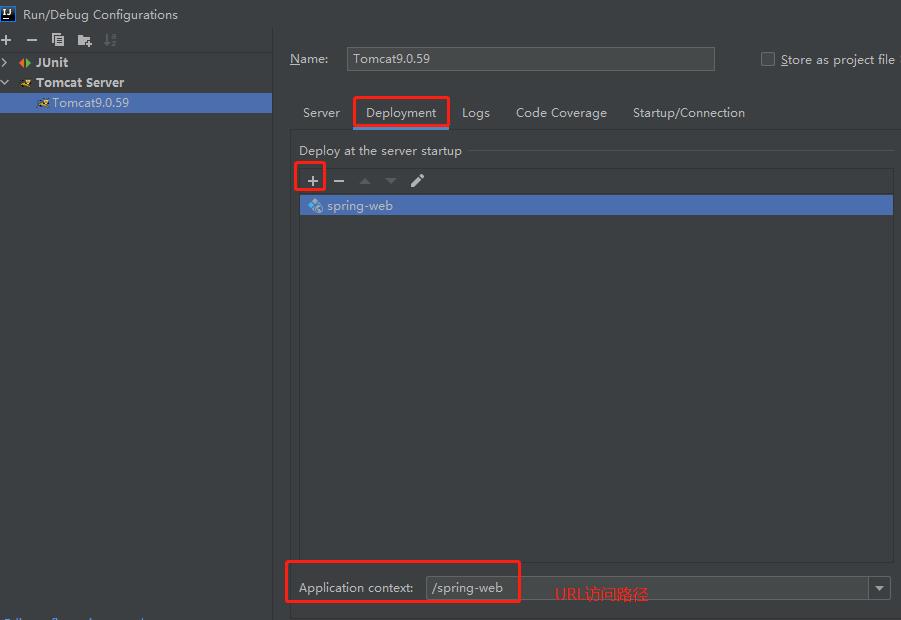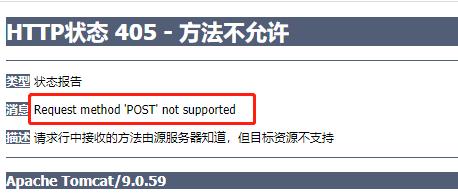Java--SpringMVC之RequestMapping请求映射和处理器方法参数
Posted MinggeQingchun
tags:
篇首语:本文由小常识网(cha138.com)小编为大家整理,主要介绍了Java--SpringMVC之RequestMapping请求映射和处理器方法参数相关的知识,希望对你有一定的参考价值。
1、新建一个maven的web项目,选择
maven-archetype-webapp
2、pom.xml文件加入依赖
spring-webmvc依赖,间接把spring的依赖都加入到项目;jsp,servlet依赖
<properties>
<!-- 项目构建使用的编码,避免中文乱码 -->
<project.build.sourceEncoding>UTF-8</project.build.sourceEncoding>
<!-- 源码编译 jdk 版本 -->
<maven.compiler.source>1.8</maven.compiler.source>
<!-- 运行代码的 jdk 版本 -->
<maven.compiler.target>1.8</maven.compiler.target>
</properties>
<dependencies>
<!-- junit单元测试 -->
<dependency>
<groupId>junit</groupId>
<artifactId>junit</artifactId>
<version>4.11</version>
<scope>test</scope>
</dependency>
<!--springmvc依赖-->
<dependency>
<groupId>org.springframework</groupId>
<artifactId>spring-webmvc</artifactId>
<version>5.2.5.RELEASE</version>
</dependency>
<!-- servlet依赖 -->
<dependency>
<groupId>javax.servlet</groupId>
<artifactId>javax.servlet-api</artifactId>
<version>3.1.0</version>
<scope>provided</scope>
</dependency>
</dependencies>
<build>
<resources>
<resource>
<directory>src/main/java</directory><!--所在的目录-->
<includes><!--包括目录下的.properties,.xml 文件都会扫描到-->
<include>**/*.properties</include>
<include>**/*.xml</include>
</includes>
<!-- filtering 选项 false 不启用过滤器, *.property 已经起到过滤的作用了 -->
<filtering>false</filtering>
</resource>
</resources>
</build>3、新建web.xml文件,并在该配置文件中注册SpringMVC框架的核心对象DispatcherServlet
<?xml version="1.0" encoding="UTF-8"?>
<web-app xmlns="http://xmlns.jcp.org/xml/ns/javaee"
xmlns:xsi="http://www.w3.org/2001/XMLSchema-instance"
xsi:schemaLocation="http://xmlns.jcp.org/xml/ns/javaee http://xmlns.jcp.org/xml/ns/javaee/web-app_4_0.xsd"
version="4.0">
<!-- 声明,注册SpringMVC的核心对象DispatcherServlet
在Tomcat服务器启动后,创建DispatcherServlet对象实例
DispatcherServlet在创建过程中,会同时创建SpringMVC容器对象,读取SpringMVC配置文件,把这个配置文件中的对象都创建好,
用户发起请求时就可以直接适用对象
Servlet初始化会执行 init() 方法;DispatcherServlet在 init() 方法中
(1)创建容器,读取配置文件
WebApplicationContext ctx = new ClassPathXmlApplicationContext("springmvc.xml");
(2)将容器对象放入到ServletContext中
getServletContext().setAttribute(key, ctx);
-->
<servlet>
<servlet-name>myweb</servlet-name>
<servlet-class>org.springframework.web.servlet.DispatcherServlet</servlet-class>
<!-- 启动Tomcat报错,无法读取这个文件 /WEB-INF/myweb-servlet.xml
Caused by: java.io.FileNotFoundException: Could not open ServletContext resource [/WEB-INF/myweb-servlet.xml]
SpringMVC创建容器对象时,默认读取的配置文件是 /WEB-INF/<servlet-name>-servlet.xml
因此需要自定义SpringMVC读取配置文件的位置
<init-param> :在servlet类中通过getInitParamenter(String name)方法访问初始化参数
param-name 就是参数名;param-value就是参数值,支持多个参数
在这个方法中通过 getInitParamter("key"); key 就是 param-name的值,来获取对应的参数值
-->
<init-param>
<param-name>contextConfigLocation</param-name>
<param-value>classpath:springmvc.xml</param-value>
</init-param>
<!-- tomcat启动后,创建Servlet对象
load-on-startup:表示Tomcat启动后创建对象的顺序;
它的值是整数,数值越小,Tomcat创建对象的时间越早,大于等于0的整数
-->
<load-on-startup>1</load-on-startup>
</servlet>
<servlet-mapping>
<servlet-name>myweb</servlet-name>
<!-- url-pattern 拦截匹配规则的 url 请求,进入springmvc 框架处理,
springmvc 就会去找能够处理这个url 的 handler去执行业务逻辑
可使用两种值
(1)使用扩展名方式,语法 *.xx , xx是自定义的扩展名,
常用的方式 *.do, *.action, *.mvc等等
不能使用 *.jsp
http://localhost:8080/myweb/some.do
http://localhost:8080/myweb/other.do
(2)使用斜杠 "/"
-->
<url-pattern>*.do</url-pattern>
</servlet-mapping>
</web-app>4、创建一个发起请求的页面 index.jsp
<%@ page contentType="text/html;charset=UTF-8" language="java" %>
<html>
<head>
<title>Title</title>
</head>
<body>
<p>SpringMVC项目</p>
<p> <a href="menu/some.do">发起some.do的GET请求</a> </p>
<br/>
<form action="menu/other.do" method="post">
<input type="submit" value="post请求other.do">
</form>
<br/>
<p> <a href="menu/noMethod.do">发起noMethod.do的GET请求</a> </p>
<br/>
<form action="menu/noMethod.do" method="post">
<input type="submit" value="post请求noMethod.do">
</form>
</body>
</html>5、创建控制器(处理器)类
6、创建一个结果的 show.jsp,显示处理结果
<%@ page contentType="text/html;charset=UTF-8" language="java" %>
<html>
<head>
<title>Title</title>
</head>
<body>
<h3>/WEB-INF/view/show.jsp从request作用域获取数据</h3>
<h3>msg数据:$msg</h3><br/>
<h3>fun数据:$fun</h3>
</body>
</html>7、创建SpringMVC的配置文件(和spring的配置文件一样)
工程的类路径即 src 目录下创建 SpringMVC 的配置文件 springmvc.xml
<?xml version="1.0" encoding="UTF-8"?>
<beans xmlns="http://www.springframework.org/schema/beans"
xmlns:xsi="http://www.w3.org/2001/XMLSchema-instance"
xmlns:context="http://www.springframework.org/schema/context"
xsi:schemaLocation="http://www.springframework.org/schema/beans
http://www.springframework.org/schema/beans/spring-beans.xsd
http://www.springframework.org/schema/context
https://www.springframework.org/schema/context/spring-context.xsd">
<!-- 声明组件扫描器 -->
<context:component-scan base-package="com.mycompany.controller" />
<!-- 声明SpringMVC框架中的视图解析器,设置视图文件的路径:InternalResourceViewResolver -->
<bean class="org.springframework.web.servlet.view.InternalResourceViewResolver">
<!-- 前缀:视图文件的路径 -->
<property name="prefix" value="/WEB-INF/view/" />
<!-- 后缀:视图文件的扩展名 -->
<property name="suffix" value=".jsp" />
</bean>
</beans>8、启动Tomcat,或者未修改Java代码,只修改 jsp 代码,重启资源即可配置如下
选择Edit Configurations...

点击添加,选择Tomcat Server ----> Local

如果这里没有Tomcat Server 选项 ;有可能是tomcat插件没启用,我们点击
file---->setting---->搜索tomcat---->勾选上

(3)配置Tomcat的信息

(4)点击Deployment----加号➕----Artifact...,配置访问路径

对应web.xml文件中的url-pattern 访问的路径
启动Tomcat,输入的访问地址为 网址+端口号+工程名+访问的路径;如:
输入 :http://localhost:8888/spring-web/
一、@RequestMapping请求映射规则
@RequestMapping 注解可以定义处理器对于请求的映射规则。该注解可以注解在方法上,也可以注解在类上
1、value 属性
value属性值常以 "/" 开始
@RequestMapping 的 value 属性用于定义所匹配请求的 URI。一个@Controller 所注解的类中,可以定义多个处理器方法。不同的处理器方法所匹配的 URI 是不同的,不同的 URI 被指定在注解于方法之上的@RequestMapping 的value 属性中。但若这些请求具有相同的 URI 部分,则这些相同的 URI,可以被抽取到注解在类之上的@RequestMapping 的 value 属性中。此时的这个 URI 表示模块的名称。URI 的请求是相对于 Web 的根目录
(1)@RequestMapping放在类上面,就是请求地址的公共部分(模块名称)
(2)@RequestMapping放在方法上面,结合类上的RequestMapping的value值即是模块的某个方法请求
2、method属性
Method 属性的取值为 RequestMethod 枚举常量。常用的为 RequestMethod.GET 与RequestMethod.POST,分别表示提交方式的匹配规则为 GET 与 POST 提交
注:
(1)指定了GET请求,就不能使用POST请求,不然报错

(2)不指定请求方式,没有限制,GET和POST皆可
import org.springframework.stereotype.Controller;
import org.springframework.web.bind.annotation.RequestMapping;
import org.springframework.web.bind.annotation.RequestMethod;
import org.springframework.web.servlet.ModelAndView;
import javax.servlet.http.HttpServletRequest;
import javax.servlet.http.HttpServletResponse;
import javax.servlet.http.HttpSession;
/**
* @RequestMapping
* value:放在类上就是请求地址的公共部分(模块名称)
*/
@Controller
@RequestMapping("/menu")
public class MyController
/**
* @RequestMapping :请求映射
* 属性:method,表示请求的方式,值为RequestMethod枚举值
* Get请求方式,RequestMethod.GET
* POST请求方式,RequestMethod.POST
*
* 指定了请求方式,如Get,使用POST请求会报错:
* HTTP Status 405 - Request method 'POST' not supported
*/
//指定some.do使用get请求方式
@RequestMapping(value = "/some.do",method = RequestMethod.GET)
public ModelAndView doSome() // doGet()----service请求处理
//处理 some.do请求,相当于service调用处理完成
ModelAndView mdv = new ModelAndView();
mdv.addObject("msg","欢迎使用SpringMVC做web开发");
mdv.addObject("fun","执行的是doSome方法");
mdv.setViewName("show");
return mdv;
//指定other.do是post请求方式
@RequestMapping(value = "/other.do",method = RequestMethod.POST)
public ModelAndView doOther()
ModelAndView mv = new ModelAndView();
mv.addObject("msg","====欢迎使用SpringMVC做web开发====");
mv.addObject("fun","执行的是doOther方法");
mv.setViewName("other");
return mv;
//不指定请求方式,没有限制
@RequestMapping(value = "/noMethod.do")
public ModelAndView doNoMethod(HttpServletRequest request,
HttpServletResponse response,
HttpSession session)
ModelAndView mv = new ModelAndView();
mv.addObject("msg","====欢迎使用SpringMVC做web开发====" + request.getParameter("name"));
mv.addObject("fun","执行的是doNoMethod方法");
mv.setViewName("other");
return mv;
二、处理器方法参数
1、逐个参数接收
(1)请求参数名与该请求处理方法的参数名相同
index.jsp页面
<p>提交参数给Controller</p>
<form action="receiveproperty.do" method="post">
姓名:<input type="text" name="name"> <br/>
年龄:<input type="text" name="age"> <br/>
<input type="submit" value="提交参数">
</form>MyController.java处理器类
/**
* 1、逐个接收请求参数
* 处理器(控制器)方法的形参名和请求中参数名必须一致;同名请求参数赋值给同名形参
*
* SpringMVC框架接收请求参数
* (1)使用request对象接收请求参数
* String strName = request.getParameter("name");
* String strAge = request.getParameter("age");
* (2)SpringMVC框架通过DispatcherServlet调用 MyController的doSome()方法
* 调用方法时,按名称对应,把接收的参数赋值给形参
* doSome(strName,Integer.valueOf(strAge))
* 框架会提供类型转换的功能,能把String转为 int ,long , float, double等类型
*/
@RequestMapping(value = "/receiveproperty.do")
public ModelAndView doSome(String name,Integer age)
System.out.println("doSome, name="+name+" age="+age);
//处理 some.do请求,相当于service调用处理完成
ModelAndView mdv = new ModelAndView();
mdv.addObject("myname",name);
mdv.addObject("myage",Integer.valueOf(age));
mdv.setViewName("show");
return mdv;
(2)请求参数名与该请求处理方法的参数名不相同
若请求 URL 所携带的参数名称与处理方法中指定的参数名不相同时,则需在处理方法参数前,添加一个注解@RequestParam(“请求参数名”),指定请求 URL 所携带参数的名称
index.jsp页面
<br/>
<p>请求参数名和处理器方法的形参名不一样</p>
<form action="receiveparam.do" method="post">
姓名:<input type="text" name="rname"> <br/>
年龄:<input type="text" name="rage"> <br/>
<input type="submit" value="提交参数">
</form>MyController.java处理器类
/**
* 逐个接收请求参数
*
* 请求中参数名和处理器方法的形参名不一样
* @RequestParam : 逐个接收请求参数中,解决请求中参数名形参名不一样问题
* 属性:1、value 请求中的参数名称
* 2、required boolean类型,默认是true
* true请求中必须包含此参数
* 位置:在处理器方法的形参定义前面
*/
@RequestMapping(value = "/receiveparam.do")
public ModelAndView receiveParams(@RequestParam(value = "rname",required = false) String name,
@RequestParam(value = "rage",required = false) Integer age)
System.out.println("receiveparam, name="+name+" age="+age);
ModelAndView mv = new ModelAndView();
mv.addObject("myname",name);
mv.addObject("m yage",age);
//show是视图文件的逻辑名称(文件名称)
mv.setViewName("show");
return mv;
2、对象接收
将处理器方法的参数定义为一个对象,保证请求参数名与这个对象的属性同名即可
Java对象Student.java类public class Student
// 属性名和请求中参数名一样
private String name;
private Integer age;
index.jsp页面
<br/>
<p>使用java对象接收请求参数</p>
<form action="receiveobject.do" method="post">
姓名:<input type="text" name="name"> <br/>
年龄:<input type="text" name="age"> <br/>
<input type="submit" value="提交参数">
</form>/**
* 对象接收请求参数
*/
@RequestMapping(value = "/receiveobject.do")
public ModelAndView receiveObject(Student student)
System.out.println("receiveParam, name=" + student.getName() + " age=" + student.getAge());
//可以在方法中直接使用 name , age
//处理some.do请求了。 相当于service调用处理完成了。
ModelAndView mv = new ModelAndView();
mv.addObject("myname",student.getName());
mv.addObject("myage",student.getAge());
mv.addObject("mystudent",student);
//show是视图文件的逻辑名称(文件名称)
mv.setViewName("show");
return mv;

这里需要注意一个问题,我们使用POST请求,如果参数中包含中文,会出现乱码情况

使用GET请求不会出现此问题,我们需要在 web.xml 配置文件中注册字符集过滤器:spring-web-5.2.5.RELEASE.jar 的org.springframework.web.filter 包下的 CharacterEncodingFilter 类

public class CharacterEncodingFilter extends OncePerRequestFilter
protected void doFilterInternal(HttpServletRequest request, HttpServletResponse response, FilterChain filterChain) throws ServletException, IOException
String encoding = this.getEncoding();
if (encoding != null)
if (this.isForceRequestEncoding() || request.getCharacterEncoding() == null)
request.setCharacterEncoding(encoding);
if (this.isForceResponseEncoding())
response.setCharacterEncoding(encoding);
filterChain.doFilter(request, response);
<!-- 注册声明过滤器,解决POST请求中文乱码 -->
<filter>
<filter-name>characterEncodingFilter</filter-name>
<filter-class>org.springframework.web.filter.CharacterEncodingFilter</filter-class>
<!--设置项目中使用的字符编码-->
<init-param>
<param-name>encoding</param-name>
<param-value>utf-8</param-value>
</init-param>
<!--强制请求对象(HttpServletRequest)使用encoding编码的值-->
<init-param>
<param-name>forceRequestEncoding</param-name>
<param-value>true</param-value>
</init-param>
<!--强制响应对象(HttpServletResponse)使用encoding编码的值-->
<init-param>
<param-name>forceResponseEncoding</param-name>
<param-value>true</param-value>
</init-param>
</filter>
<filter-mapping>
<filter-name>characterEncodingFilter</filter-name>
<!-- /*:表示强制所有的请求先通过过滤器处理 -->
<url-pattern>/*</url-pattern>
</filter-mapping>以上是关于Java--SpringMVC之RequestMapping请求映射和处理器方法参数的主要内容,如果未能解决你的问题,请参考以下文章